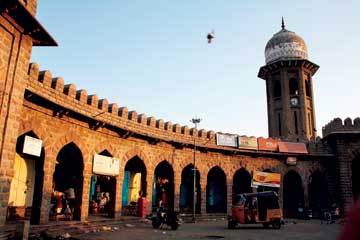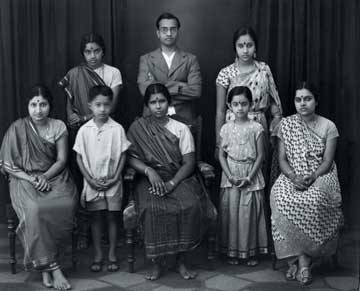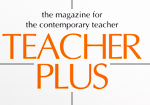Harini Kumar and Chetan Chauhan
Photographs offer us moments from the past – immediate, recent, and distant – and have now become an important source of information for historians. While most of us look at a picture for what it shows (and what it makes us remember), a historian does more. He or she looks around, behind and across a picture to reconstruct not only facts but also feelings about the period it frames. This article takes a look at what goes on behind a cameraperson’s lens, and inside his or her mind, as an image is transferred from an experience in the present into a window to the past.


Even as monolithic historical structures dominate certain photographs, for us they seem to be engulfed in the contemporary. One is struck by the ‘everyday’ that surrounds the many mosques, tombs, and palaces in the streets of the Old City of Hyderabad. Many other Indian cities offer similar experiences – Lodhi Gardens or Safdarjung’s Tomb in New Delhi, Bibi ka Maqbara in Aurangabad, the Victoria Monument in Kolkata. The “ordinariness” of the exquisite and the “exquisiteness” of the ordinary provide a variety of historical threads to pull. This trend has existed since the colonial period, and can be popularly seen in the photographs documenting this era.2 Change can also be traced through a series of photographs of a particular subject. For instance, if one compares photographs of the Charminar area taken over the past few decades, one can trace the changes that have evolved over time without having to refer to documents describing such changes.

 Photographs serve as a briefcase of memories that we carry with us and the camera an instrument of capturing memories. It would be a misconception to think only memories are captured; emotions, state of mind and the nature of the surroundings can be inferred from a photograph. Of course, this would depend closely on the manner in which the photograph is framed. Photographs can be seen as mystical due to the way in which they can represent both the past and the present in one frozen image; they make experiences of history more interactive and personalized, and of course heavily influenced by one’s own imagination. Historical spaces act like an empty canvas of imagination, where history is defined through an act of photography. Family portraits can also be considered important historical documents. The clothes people are wearing, hairstyles, jewelry, shoes and other adornments reflect the tastes and aspirations of a particular family or era and give one an insight into the lives of people during a particular period of time.
Photographs serve as a briefcase of memories that we carry with us and the camera an instrument of capturing memories. It would be a misconception to think only memories are captured; emotions, state of mind and the nature of the surroundings can be inferred from a photograph. Of course, this would depend closely on the manner in which the photograph is framed. Photographs can be seen as mystical due to the way in which they can represent both the past and the present in one frozen image; they make experiences of history more interactive and personalized, and of course heavily influenced by one’s own imagination. Historical spaces act like an empty canvas of imagination, where history is defined through an act of photography. Family portraits can also be considered important historical documents. The clothes people are wearing, hairstyles, jewelry, shoes and other adornments reflect the tastes and aspirations of a particular family or era and give one an insight into the lives of people during a particular period of time.
There is immense potential to narrate history effectively to a viewer through photographs as the visual medium is a strong, thought-provoking analytical tool that is capable of catalyzing strings of interesting thoughts, which when analyzed, can bring out varied perceptions and interpretations of a continuously changing past. Photographs also represent the personal concerns of the photographer. These concerns can range from the exploration of historical issues to the expression of the photographer’s emotions or of aesthetical values, which becomes a receptacle from which viewers draw meanings.
______________________________________________________________________________________
References
- These are a cluster of tombs near Hyderabad’s Golconda Fort which house the remains of the Qutb Shahi kings, who ruled the region between the 16th and 17th centuries.
- A good source of old photographs for the teacher to use in the classroom may be found at www.oldindianphotos.in while many other web sites and blogs offer contemporary views of historical monuments.
The authors have just graduated from the M A (Communication) program at the University of Hyderabad. They can be contacted at harini747@gmail.com and chetan.sjc@gmail.com.
Photo album histories
 Ask your students to bring in an old family photograph, like the ones above or try to get an old picture from a web site or a magazine. Show the students the picture, and ask them to study it carefully. You could ask them to imagine that they have found the photograph inside an old book that they borrowed from the library, and are trying to find out where it came from. Collectively or individually, you could address the following questions.
Ask your students to bring in an old family photograph, like the ones above or try to get an old picture from a web site or a magazine. Show the students the picture, and ask them to study it carefully. You could ask them to imagine that they have found the photograph inside an old book that they borrowed from the library, and are trying to find out where it came from. Collectively or individually, you could address the following questions.
How would you describe the picture in a caption?
What does the picture show?
What does it tell us about the customs of the time it represents? For instance, can we surmise anything about the role and position of women in society and within families from the way the people in the picture are arranged?
Can you tell what the photographer is thinking, or how he was instructed?
What other artifacts are present in the picture and what do they tell you about the period and about this family?
The students will probably come up with many more questions on their own. Based on the discussion, get them to write a short essay or story, imagining the time at which the photograph was taken.
